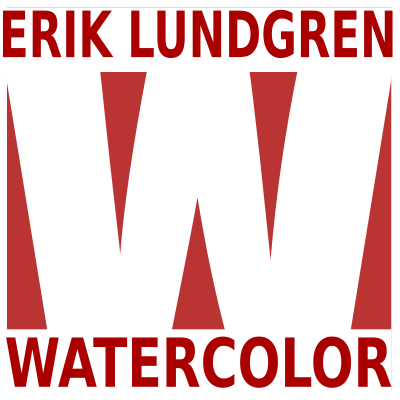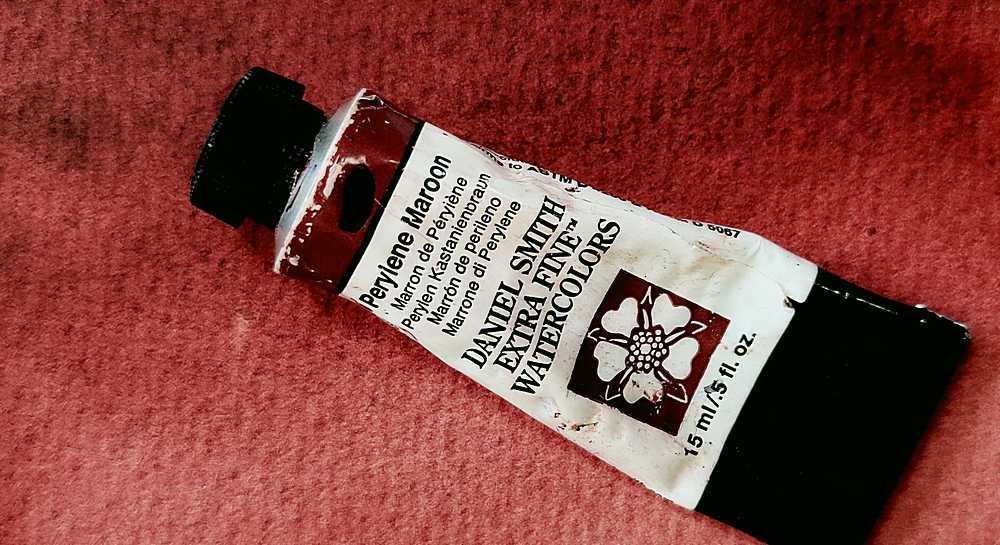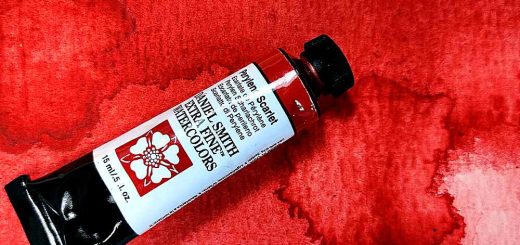Vermilion – PR106
September 25, 2025

Natural Vermilion
Vermilion, or as the color is called in Swedish and German: Cinnober (Zinnober), is no longer a watercolor pigment – today it is just a name for an orange-red made from various pigments. But originally the color was of great importance in art and craftsmanship all over the world. The most original type can be found in nature in the form of crystals that were crushed and ground into a fine red powder, thus becoming the pigment known as Vermilion.

Rob Lavinsky, iRocks.com – CC-BY-SA-3.0, CC BY-SA 3.0 https://creativecommons.org/licenses/by-sa/3.0, via Wikimedia Commons

Georges Jansoone (JoJan), CC BY-SA 3.0 http://creativecommons.org/licenses/by-sa/3.0/, via Wikimedia Commons
Vermilion in its natural form has been used by different human cultures for at least several thousand years before BCE. In places as diverse as Turkey, the Mayan empire and other American cultures, as well as in China, Vermilion was a celebrated and highly precious red color.
Synthetic Vermilion
As early as the 1st century CE, Chinese alchemists invented a method for synthetically producing Vermilion. The method was fairly simple: heating a mixture of mercury and sulfur so that black mercury sulfide was formed, which was then recrystallized into the red form. The result was a purer and more intense red than the one found in nature. The technique spread via the Arab world and later to Europe.
Both natural Vermilion and the synthetic form were, and still are, highly toxic because of the mercury that is the basis of the pigment.
Up until the 19th century, Vermilion was a very important pigment for artists in Europe. In the 1800s, new synthetic pigments such as Chrome Red and Cadmium Red were developed; these gradually replaced Vermilion (though they too were highly toxic). In the early 20th century, when the toxicity of Vermilion became more widely recognized, the pigment was gradually phased out. By the mid-century it was no longer possible to buy genuine Vermilion for commercial use.
The pigment is still produced, but only on a minimal scale, and solely as a historical pigment for restoration, icon painting, or traditional craft. It is sold only in very small amounts as a dry pigment, accompanied by health hazard warnings.
Modern Vermilion
Colors sold under the name Vermilion today are almost all substitutes. A common replacement is a naphthol red pigment (PR188); the toxic PR108 (Cadmium Red) is also sometimes marketed as Vermilion. A very common substitute for Vermilion, especially in cheaper watercolor paints, is another naphthol pigment, PR4, which is inexpensive to produce but suffers from major shortcomings in durability.
The most common way manufacturers today create a color they call Vermilion is by mixing various red and yellow pigments. Only one manufacturer offers genuine Vermilion: Wallace Seymour Vintage Watercolours. But the pigment may not be desirable – it is expensive and its permanence is questionable. It turns black or black-brown when it reacts with pollutants in the air or is exposed to strong light.
If Vermilion had been discovered (or “invented”) today, the pigment would not have attracted any attention whatsoever. High cost, poor permanence, and extreme toxicity are not qualities sought after in modern colors. Yet there are more than 70 watercolor paints that bear the name Vermilion, all but one of them are fakes.












